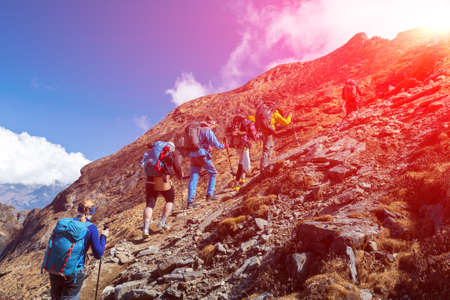1. Introduction: Finding Your Way in the British Countryside
The heart of the United Kingdom beats strongest in its landscapes—where rolling Dales unfold beneath ever-shifting skies, and ancient moorlands whisper old tales through the mist. For generations, walkers have been drawn to these storied paths, tracing routes across windswept ridges, bracken-clad hills, and sun-dappled woodlands. Yet, amidst this enchanting patchwork of fields and fells lies a timeless challenge: how best to find your way? Whether you’re wandering along a centuries-old right of way that weaves through Yorkshire stone walls or traversing the wild expanse of Dartmoor under brooding clouds, navigation remains at the heart of every adventure. The British countryside beckons not just with its beauty but also with its demand for skill and preparation—making the choice between trusty map & compass kits and cutting-edge GPS systems an essential decision for UK walkers.
Budget Map & Compass Kits: The Classic British Approach
For generations, British walkers have relied on the humble map and compass to guide their way through misty fells, ancient woodlands, and windswept moors. The tradition endures, with Ordnance Survey maps unfolding on chilly mornings as friends gather at the start of a ramble. In these moments, there’s a quiet satisfaction in tracing finger along winding footpaths, aligning north with an old-school Silva compass, and swapping tales of navigation lessons learned on childhood hikes or in local walking clubs.
Maps and compasses are more than mere tools—they’re symbols of a time-honoured approach to outdoor adventure cherished across the UK. For many seasoned ramblers, mastering these skills is almost a rite of passage, part of the fabric of British countryside culture. Local clubs often host navigation workshops, where newcomers learn to decipher contour lines, read grid references, and orientate themselves even when cloud sweeps in over a Lakeland ridge or Dartmoor tor.
Ordnance Survey Maps: A National Treasure
The Ordnance Survey map is synonymous with exploring Britain’s great outdoors. Its detailed depiction of rights of way, landmarks, and topography makes it indispensable for walkers navigating unfamiliar terrain. Whether you’re plotting a route through the Yorkshire Dales or seeking hidden trails in the South Downs, these maps offer clarity and reassurance—qualities that digital screens sometimes lack when batteries fail or signals fade.
Advantages of Budget Map & Compass Kits
| Feature | Benefit |
|---|---|
| Affordability | Low upfront cost; accessible for all walkers |
| No reliance on batteries/electronics | Reliable in remote areas without signal or power |
| Skill development | Encourages traditional navigation abilities; boosts confidence outdoors |
| Cultural heritage | Connects with British walking traditions and local clubs |
| Simplicity and durability | Tough enough for wind, rain, and mud; easy to use in all weathers |
Navigational Skills Passed Down Through Generations
Learning to navigate by map and compass is an experience rich with sensory detail—the crisp rustle of paper as you fold your route, the metallic click as your compass needle settles towards magnetic north. These skills foster a deeper connection with landscape and history. As you stride across heather-clad hills or pause beside an ancient stone stile, you become part of a living tradition—one that values self-reliance, curiosity, and respect for the wild places that make Britain unique.

3. Premium GPS Systems: Modern Technology on the Trail
For UK walkers who yearn for both adventure and assurance, premium GPS systems offer a compelling fusion of innovation and comfort. These high-end devices are far more than mere digital maps—they are sophisticated companions equipped with features such as live location tracking, route planning, altitude readings, and even weather alerts. As you traverse the wind-swept ridges of the Lake District or wander through the ancient paths of the South Downs, a GPS system whispers a quiet confidence that every step is accounted for.
The growing popularity of these systems among British hikers speaks to our ever-deepening relationship with technology in the wild. With touchscreen interfaces designed to withstand rain-lashed moors and rugged cases that shrug off sudden hail on a Scottish fell, today’s premium GPS units are tailored for the capricious moods of British weather. Their ability to store countless Ordnance Survey maps and guide you back to safety with turn-by-turn navigation can transform an anxious ramble into a stress-free exploration—even as the mists roll in over Dartmoor or fog blurs the Pennine Way.
Yet, this reliance on digital mapping carries its own risks beneath the comforting glow of an LCD screen. Batteries falter in freezing winds; signals may stutter under ancient yews or within steep-sided dales. The convenience of a device that pinpoints your place in the world with a tap can sometimes lull even seasoned hillwalkers into complacency—leaving them vulnerable if technology fails at a critical juncture. In these moments, when clouds gather low and drizzle patters against your jacket, the old wisdom rings true: technology is a fine tool, but not an infallible one.
4. Practical Comparisons: Cost, Reliability, and Everyday Use
Out on the undulating paths of the Lake District or beneath the brooding mists of the Scottish Highlands, your navigation tools become trusted companions. Let’s compare budget map & compass kits with premium GPS systems—essentials that shape every British walker’s journey.
Price Points at a Glance
| Navigation Tool | Initial Cost | Ongoing Costs |
|---|---|---|
| Map & Compass Kit | £10–£30 | None (occasional map replacement) |
| Premium GPS System | £200–£500+ | Batteries, software updates, subscriptions |
The classic paper map and trusty compass are friendly on the wallet—ideal for walkers who value simplicity. GPS devices demand a higher upfront investment, often justified by advanced features, but they may also require ongoing spending for maps and connectivity.
Ease of Use Under British Skies
Maps & Compasses:
- Require basic skills—once learnt, never forgotten.
- No batteries to fail; always ready, come rain or shine.
- Can be awkward in high winds or relentless drizzle.
GPS Systems:
- User-friendly interfaces and instant location pinpointing.
- Backlit screens shine in low light or dense fog.
- Sensitive to battery life and prone to fiddly touchscreen errors when wet or gloved up.
Reliability Where Weather Rules
The British weather is a legendary storyteller, and both tools have their chapters. Maps and compasses will not flinch at a soaking or lose signal among crags; their only foe is human error or a sodden map case. GPS units can offer rapid reassurance—until batteries run dry or signal flickers away among the wilds of Snowdonia. Neither tool is wholly infallible; wisdom lies in knowing when each shines brightest.
What Survives Drizzle and Patchy Signal?
On a damp day tramping through the Peak District, your waterproofed OS map may outlast any electronic rival. In contrast, a GPS unit could swiftly guide you off featureless moorland in thick mist—provided its batteries hold out. Savvy UK walkers often carry both: the map and compass as stalwart foundations, with GPS as an optional layer of confidence against unpredictable elements.
5. Cultural Notes: The Social Side of Navigation
There’s something quietly magical about the way navigation choices shape the collective memory of a walk in the British countryside. For many, the ritual begins with a classic OS map spread across a weathered wooden table, pints in hand, heads bent together over winding contours and footpaths. This is more than route planning—it’s a cherished tradition, as much about camaraderie as cartography. The gentle rustle of paper and the occasional debate over grid references become part of the day’s story.
The pub lunch itself is an institution—an unofficial headquarters for walkers plotting their next adventure or recounting tales from the trail. Here, analogue loyalists take pride in their well-thumbed maps and trusty compasses, swapping stories of near-misses with brambles and bogs, while digital devotees pass around GPS devices to show off elevation stats or pinpoint hidden gems on interactive screens. Each group brings its own flavour to the experience, sometimes sparking friendly banter over which method reigns supreme when the mist rolls in over Dartmoor or the Lake District fells.
This rivalry is rarely serious; it’s woven into the fabric of British walking culture. The map-readers argue that nothing beats tracing ancient rights-of-way with your finger, feeling a tangible connection to explorers past. GPS enthusiasts counter with tales of discovering new paths, unfazed by sudden fog or fading daylight. Yet often, these worlds merge—a walker using GPS may still carry a folded map as backup, and those who swear by paper might sneak a peek at a smartphone when the path disappears under gorse and heather.
Ultimately, whether gathered around a pint or pausing on a windswept ridge, navigation becomes a social glue—a shared language that connects generations of walkers across Britain’s storied landscapes. In these moments, technology and tradition intertwine, and every navigational choice becomes part of the journey’s tapestry.
6. Conclusion: Choosing the Right Path for Your Walking Adventures
As you lace up your boots and step onto the winding footpaths of the British Isles, the way you navigate becomes part of your story. Perhaps you’re drawn to the tactile reassurance of a well-worn OS map and the comforting weight of a compass—tools steeped in British walking heritage, connecting you to generations of ramblers who found their way by reading the land and sky. Or maybe you’re captivated by the promise of premium GPS systems, with their digital maps and real-time tracking, offering clarity even when mist rolls in across the fells.
The truth is, there’s no single “right” choice. The landscape here—be it the rugged Lake District, windswept Cornish coast, or ancient paths through Yorkshire moors—invites us to match our navigation tools with our spirit of adventure. For some, budget map and compass kits evoke a sense of romance and resourcefulness; for others, technology brings peace of mind when exploring unknown territories or tackling unpredictable weather.
Consider your own walking style: do you relish slow discovery and self-reliance, or do you prefer efficiency and digital precision? Reflect on your chosen destination—the remoteness of Scottish highlands may call for both reliability and backup, while well-marked trails in the Cotswolds might lend themselves to simple navigation aids. And, naturally, let your budget play its part; after all, both tradition and innovation offer ways to roam safely without breaking the bank.
Ultimately, there’s beauty in blending old and new. Many seasoned UK walkers tuck a paper map into their rucksack alongside a GPS device, ready for any turn in the weather or signal drop. By embracing both heritage tools and modern aids, you’re free to wander further—confident that whether you’re tracing Roman roads or discovering hidden dales, every journey remains uniquely yours.
So as you plan your next walking adventure across these storied isles, take a moment to weigh your needs and desires. Let both tradition and technology guide your steps—and let the landscape reward your curiosity with each stride.

